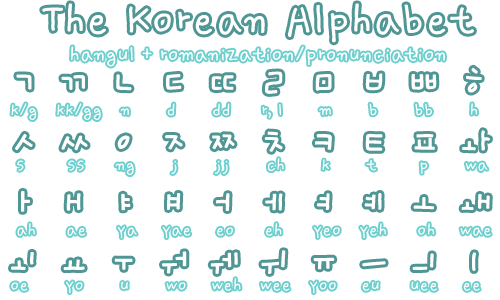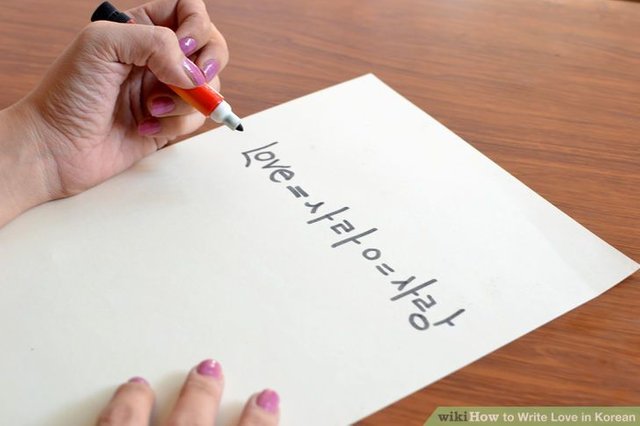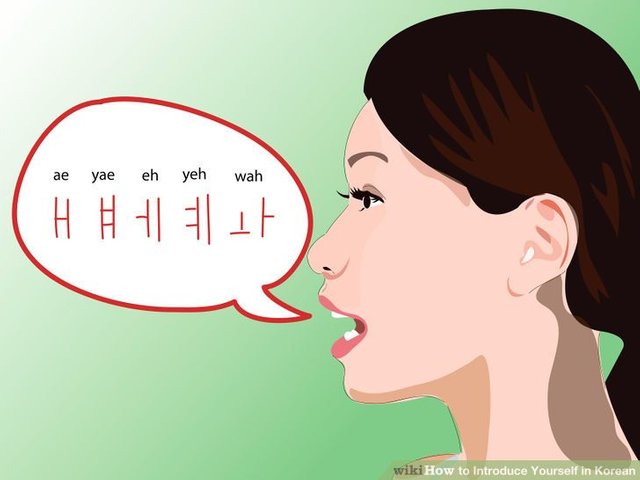Korean - Learn how to write in Korean, for beginners ! 한국어 - 한국어로 쓰는 방법 배우기

Hello Steemers!
Korean is an alphabetic system. The Korean alphabet is composed, like the Latin alphabet, of consonants and vowels, this is already greatly simplifying our task. The name of the Korean alphabet in Korean is "Hangeul", 한글. This is the generic name of the writing system, but also a synonym for "written syllable".
Each hangeul is composed of letters.
These are called in Korean "Jamo", 자모.
The Korean syllables are written so that they all fit into a square shape. It should be remembered that before the invention of this writing system, Korean was written with Chinese characters, each character being circumscribed in a square.

The structure of hangeul: initial (s), vowel (s), final (s)
- Each hangeul is composed of initial consonants, vowels and sometimes final consonants.
Due to the shape of certain vowels, (one can speak of "vertical" vowels or of "horizontal" vowels) they are added either to the right or to the bottom of the initial consonant.
Examples of vertical vowels
ㅏ (a), ㅣ (i)
Examples of horizontal vowels
ㅗ (o), ㅜ (u)
These vowels can be composed of consonants, such as ㄴ (n), to form the following hangeul:
나 (na), or 니 (ni), with vertical cutting. In this case the square is divided vertically between the two letters: between half and two-thirds for the consonant, the remainder for the vowel.
노 (no), or 누 (nu), with a horizontal cut; In this case, the square is divided horizontally between the two letters: approximately half the top for the consonant, the remainder for the vowel.
Since the Korean contains not only open syllables but also closed syllables, many hangeul contain (at least) a final. Whatever the location of the vowel in relation to the initial, the final is always below the other jamo, in the third of the bottom. Thus, the hangeul 난 (nan) or 눈 (nun).

The diphthongs
However, diphthongs exist in Korean. In this case, the first vowel (which will necessarily be a "horizontal" vowel) will be written first below the initial (as in 노), followed by The second vowel (which will necessarily be a "vertical" vowel).
Lets take the letters of the preceding examples
ㄴ (n) + ㅗ (o) + ㅏ (a) => 놔
ㄴ (n) + ㅜ (u) + ㅣ (i) => 뉘
The syllables comprising diphthongs are obviously not deprived of final consonants. For example :
ㄴ (n) + ㅗ (o) + ㅏ (a) + ㄴ (n) => 놘

Some will say that it is really complicated to write in Korean, but with practice you can learn really fast! Thanks for reading!
